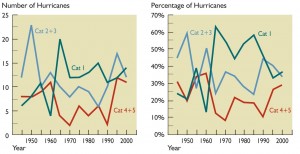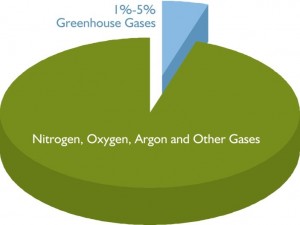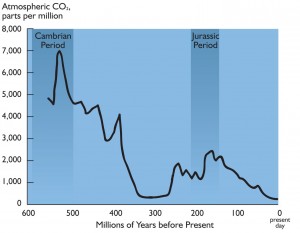Infrastructure is being damaged by sea level rise, heavy downpours, and extreme heat….Sea level rise, storm surge, and heavy downpours, in combination with continued development in coastal areas, are increasing damage to U.S. infrastructure including roads, buildings, and industrial facilities, and are also increasing risks to ports and coastal military installations. Flooding along rivers, lakes, and in cities following heavy downpours, prolonged rains, and rapid melting of snow ice pack is exceeding the limits of flood protection infrastructure designed for historical conditions. Extreme heat is damaging transportation infrastructure such as roads, rail lines, and airport runways.
Not one word of this passage is demonstrated by the 841 pages of the report either. The NCA simply suggests to Americans to “[replace] short vehicle commutes with biking or walking and [reduce] your red meat intake to reduce the amount of methane emitted from the animals we eat.”
Sea level has been rising, in fact, since the end of the last ice age, 12,000 years ago! But there has been no acceleration in the rate of sea level rise for at least 200 years. Over that past 200 years, the long term, stable sea level rise has averaged a mere 6.6 inches per century, as measured by major tidal gauge studies.
Yet, the Obama Administration’s report tries to tell us that global sea levels could rise by as much as 6.6 feet by 2100, which would be 12 times the current long term average rate over the last 200 years! Furthermore, a 2014 peer-reviewed study just published by Cazenave, et. al. finds the rate of sea level rise has decelerated by 31 percent since 2002. That is consistent with a slight global cooling trend since that time, which some senior scientists predict could last decades.

All of this true climate science is authoritatively explained in complete detail in the thousands of pages of Climate Change Reconsidered II, authored by the dozens of top scientists serving on the Nongovernmental International Panel on Climate Change (NIPCC) and published this year in 3 volumes by the Heartland Institute. Those volumes are “double peer reviewed,” as they discusses thousands of peer reviewed articles published in scientific journals and are themselves peer reviewed. Last year, the Cato Institute published a thorough, comprehensive refutation of the publicly released draft of the NCA, titled The Missing Science from the Draft National Assessment on Climate Change, by Patrick J. Michaels, et. al. If you are interested in knowing what you are talking about, and are an intelligent layman, you can be thoroughly educated by those calm, dispassionate, comprehensive, reasoned discussions of the issues surrounding global warming and “climate change.” You can learn more by attending the Ninth International Conference on Climate Change, to be held at the Mandalay Bay Resort in Las Vegas, July 7-9, with more than 1,000 scientists from around the world.




